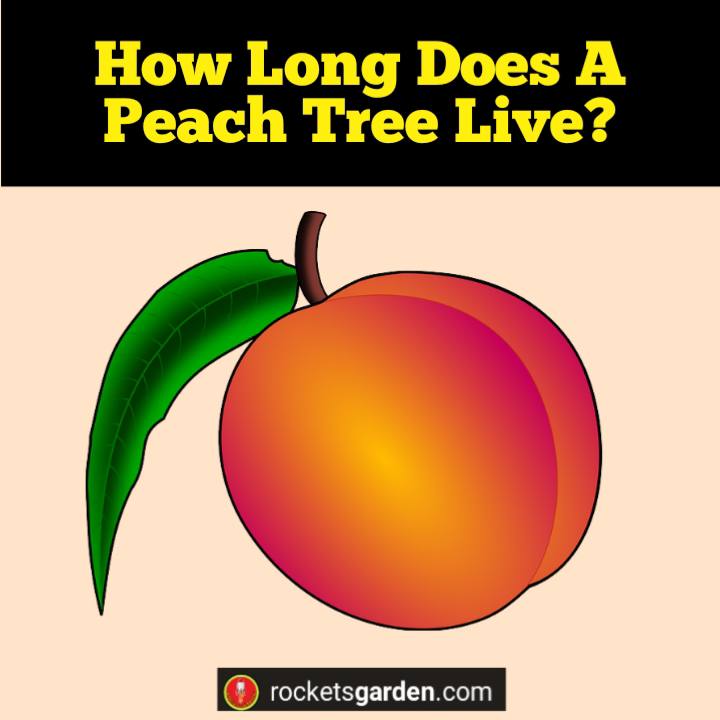
Peach trees are a popular fruit tree that can provide a bountiful harvest for many years. However, like all living organisms, peach trees have a limited lifespan. If you are wondering how long a peach tree can live, there are several factors to consider.
How Long Does A Peach Tree Live?
Peach trees (Prunus persica) typically have a lifespan of 12 to 20 years. However, some trees can live up to 30 years with proper care and maintenance. The shorter lifespan of peach trees compared to other fruit trees can be attributed to their susceptibility to various diseases, pests, and environmental stressors.
The age at which a peach tree starts producing fruit varies, but most trees begin bearing fruit within 3 to 4 years after planting. The quality and quantity of fruit produced generally decline after 12 to 15 years. Although some peach trees may live longer, their fruit production and overall health may decline as they age.
What Factors Can Affect The Lifespan Of A Peach Tree?
Various factors can impact the lifespan of a peach tree, including environmental conditions, soil quality, diseases, pests, and the overall care provided. Temperature extremes, particularly cold winters and hot summers, can cause stress to the tree and shorten its lifespan.
Poor soil quality and improper drainage can lead to root rot and other issues, further reducing a tree’s life. Diseases and pests can cause significant damage to the tree if not properly managed, resulting in a reduced lifespan. Additionally, inadequate care, such as improper pruning, insufficient watering, and lack of fertilization, can negatively affect a peach tree’s overall health and longevity.
How Can I Care For My Peach Tree To Prolong Its Life?
To prolong the life of your peach tree, provide it with proper care and maintenance. Ensure that the tree is planted in well-draining soil, receives adequate sunlight, and is watered regularly. Prune the tree annually to maintain its shape, remove dead or damaged wood, and promote healthy growth.
Fertilize the tree as needed, typically once a year in early spring. Monitor your peach tree for signs of pests and diseases, and treat problems promptly to prevent further damage. Finally, protect the tree from extreme temperatures and weather conditions, if possible, to reduce stress and promote overall health.
Can Peach Trees Live Longer In Certain Growing Conditions?
Yes, peach trees can live longer in certain growing conditions. Ideal conditions for peach trees include well-draining soil, full sun exposure, and moderate temperatures. Providing the tree with the appropriate care, including proper watering, fertilization, and pruning, can help prolong its life.
Additionally, planting peach trees in an area with fewer disease and pest pressures can contribute to a longer lifespan. While some factors may be out of your control, such as temperature extremes and severe weather, optimizing the growing conditions for your peach tree can help ensure its health and longevity.
What Are Some Signs That A Peach Tree Is Reaching The End Of Its Lifespan?
As a peach tree reaches the end of its lifespan, there are several signs that may indicate its decline. These signs can include reduced fruit production, poor fruit quality, a decline in overall vigor and growth, and increased susceptibility to diseases and pests.
The bark may become discolored or start to peel, and branches may become brittle and break easily. Leaves may appear yellow or exhibit other signs of nutrient deficiency. If you notice these signs in your peach tree, it may be an indication that the tree is nearing the end of its life.
How Can I Tell If My Peach Tree Is In Decline Or If It Can Be Saved?
To determine if your peach tree is in decline or can be saved, carefully evaluate its overall health and the severity of any issues it may be experiencing. Look for signs of diseases, pests, nutrient deficiencies, or environmental stressors that could be contributing to the tree’s decline.
If the issues appear to be treatable, take appropriate action to remedy the problems and monitor the tree’s progress. If the tree’s health continues to decline despite your efforts, it may be an indication that the tree is reaching the end of its lifespan and cannot be saved.
In some cases, it may be more cost-effective and beneficial to remove the declining tree and replace it with a new, healthy peach tree, rather than investing time and resources into trying to save a tree that is past its prime.
What Are Some Common Diseases Or Pests That Can Shorten The Life Of A Peach Tree?
Several common diseases and pests can shorten the life of a peach tree. Peach leaf curl, caused by the fungus Taphrina deformans, leads to curled, discolored leaves and can weaken the tree. Brown rot, caused by the fungus Monilinia fructicola, affects the fruit and can cause significant crop loss. Bacterial canker, caused by the bacterium Pseudomonas syringae, results in cankers on the branches and trunk, which can eventually kill the tree.
Common pests that can damage peach trees include the peach tree borer, which burrows into the tree and can cause structural damage, and the oriental fruit moth, which feeds on the fruit and shoots. Aphids, mites, and scale insects can also cause damage to peach trees, affecting their overall health and shortening their lifespan.
What Is The Average Fruit Production Lifespan Of A Peach Tree?
The average fruit production lifespan of a peach tree is about 10 to 12 years. While a peach tree may begin producing fruit within 3 to 4 years after planting, its fruit production and quality typically peak between 5 and 8 years.
After this peak period, fruit production may start to decline, and the overall health of the tree may deteriorate. Although some peach trees can continue to produce fruit for several years beyond this period, the quantity and quality of the fruit are likely to decline, making it less productive and less economically viable for growers.
